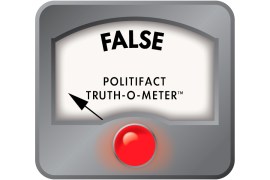What if a law passed but no one enforced it? That’s essentially what has happened with one small but helpful rule about hospitals and financial assistance for medical bills.
The Affordable Care Act, the health law also known as Obamacare, requires nonprofit hospitals to make financial assistance available to low-income patients and post those policies online. Across the U.S., more than half of hospitals are nonprofit — and in some states all or nearly all hospitals are nonprofit. But many people who qualify for financial assistance — or “charity care,” as it is sometimes known — never apply.
Jared Walker is helping get the word out. He founded Dollar For, an organization that directly helps people use hospital financial assistance policies to overcome unaffordable medical bills. Walker earned the public’s attention early this year through a viral TikTok he made on a lark, late one night.
In the 60-second video, Walker outlines the basics of applying for hospital financial assistance, in response to a prompt that asks TikTokers to share “something you’ve learned that feels illegal to know.”
“Most hospitals in America are nonprofits, which means they have to have financial assistance or charity care policies,” he says in the video. “This is going to sound weird, but what that means is if you make under a certain amount of money the hospital legally has to forgive your medical bills.”
The video outlines the basics of applying for hospital charity care, which he says he uses to “crush” medical bills.
“An Arm and a Leg,” a podcast about the cost of health care, has been covering Walker and his organization’s work since the video’s viral moment, as well as the decades-long fight to establish charity care rules that preceded it.
Here are five strategies Walker endorses and shares during monthly volunteer training sessions:
1. How do you find the policy?
Walker’s trick for finding a hospital’s financial assistance policy is as straightforward as it gets: Google it. Enter the hospital’s name, followed by “financial assistance policy” or “charity care policy.” The first search results are likely to be an outline of the policy and an application to submit.
Your first instinct might be to go to your hospital’s home page. But that’s likely a mistake. Policies tend to be hidden from hospital website menus, according to Walker. In many states, charity care laws are more specific than what’s outlined in the ACA, and hospitals may be required to display their financial assistance policies prominently.
It’s rare for the policies not to be available online at all, but in some cases, Walker said, you may need to call the hospital and ask for an application.
2. Who qualifies?
Most hospital charity care policies are income-based, using percentages of the federal poverty guidelines to define eligibility. In an example, Walker showed the guidelines for St. Luke’s Hospital of Kansas City, where patients earning 200% of the federal poverty guidelines were responsible for 0% of their bill. That figure was just over $2,000 a month in 2021. Those making 201% to 300% were eligible for certain discounts.
Not sure how your income compares to the federal poverty guidelines? Here’s one of many helpful online calculators. Remember, your household is you, plus your spouse, plus anyone you claim as a dependent on your taxes. Roommates don’t count.
Applications typically require documentation to prove your income. Hospitals ask for things like recent pay stubs, proof of unemployment, Social Security award letters and tax returns, according to Walker. Exactly which documents the hospital may ask for can vary. But a hospital can’t deny you for failing to provide a document that isn’t spelled out in the application.
3. In collections? You may still have time.
The IRS requires nonprofit hospitals to give patients a grace period of 240 days (about eight months) from the initial billing date to apply for financial assistance. But hospitals are allowed to send bills to collection agencies much earlier than that — often after just 120 days.
At that point, patients often feel as though they’re being hounded by notifications from collection agencies. Still, patients may have months remaining to apply for financial assistance, and alerting the collection agents that an application with the hospital is in process can sometimes stop the letters.
“The hospital can take you out of collections just as easily as they put you there,” Walker said.
In some cases, hospitals will forgive bills that are much older than 240 days. When in doubt, applying may be worth it even for bills that are several years old, Walker said. It does not hurt to ask for help.
4. Looks like you won’t qualify? Write a letter.
If you don’t qualify on income alone but you still can’t afford your hospital bills, don’t rule yourself out. The same applies if the hospital’s financial aid policy specifies that only uninsured people qualify; you might have insurance but are still looking at giant bills you can’t pay.
Walker said a letter of financial hardship attached to an application can help. In fact, he encourages each patient to attach a letter, no matter how strong their application seems.
“These are real people reading these and the letters go a long way,” he said. Ultimately, each hospital is making a judgment call about who gets the assistance it is legally obligated to provide. Make your case.
5. Yes, you may need to fax it in.
While many hospitals have digital portals to enable online bill-paying, there’s usually no equivalent for applying for financial assistance. Many applications offer only a mailing address. But Walker and his team have found that applications sent by mail frequently get lost.
Instead, they recommend either walking the application into the hospital and delivering it by hand or faxing it. Public libraries, packaging stores like FedEx and certain online services make faxing possible even if, like most people, you haven’t used a fax machine since the late 1990s.
When it comes to accessing charity care, “you’re gonna have to jump through a lot of hoops,” Walker said, “but it’s worth it.”
Emily Pisacreta is a reporter and producer with “An Arm and a Leg,” a podcast about the cost of health care that is co-produced with KHN.







